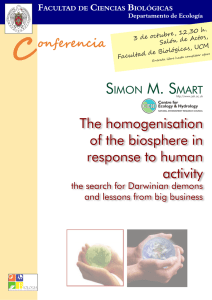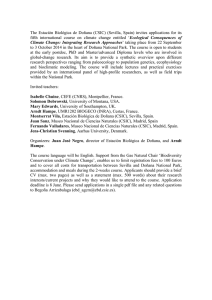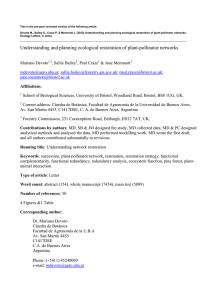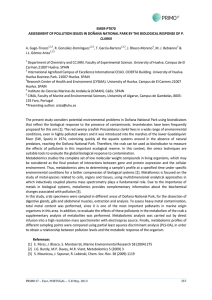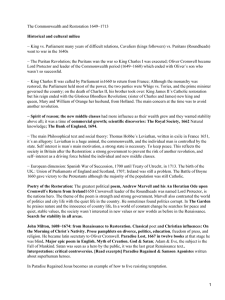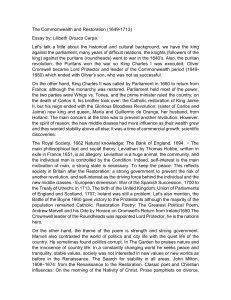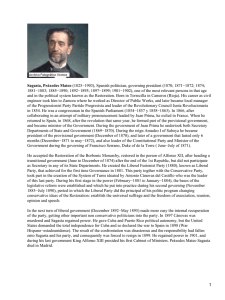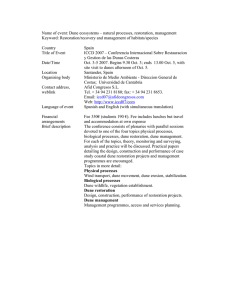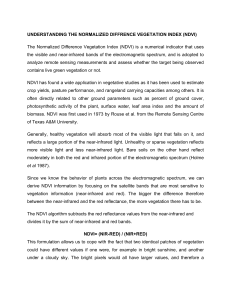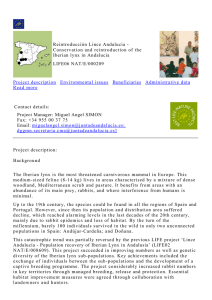Methods for the study of vegetation in the adaptive restoration of an
Anuncio
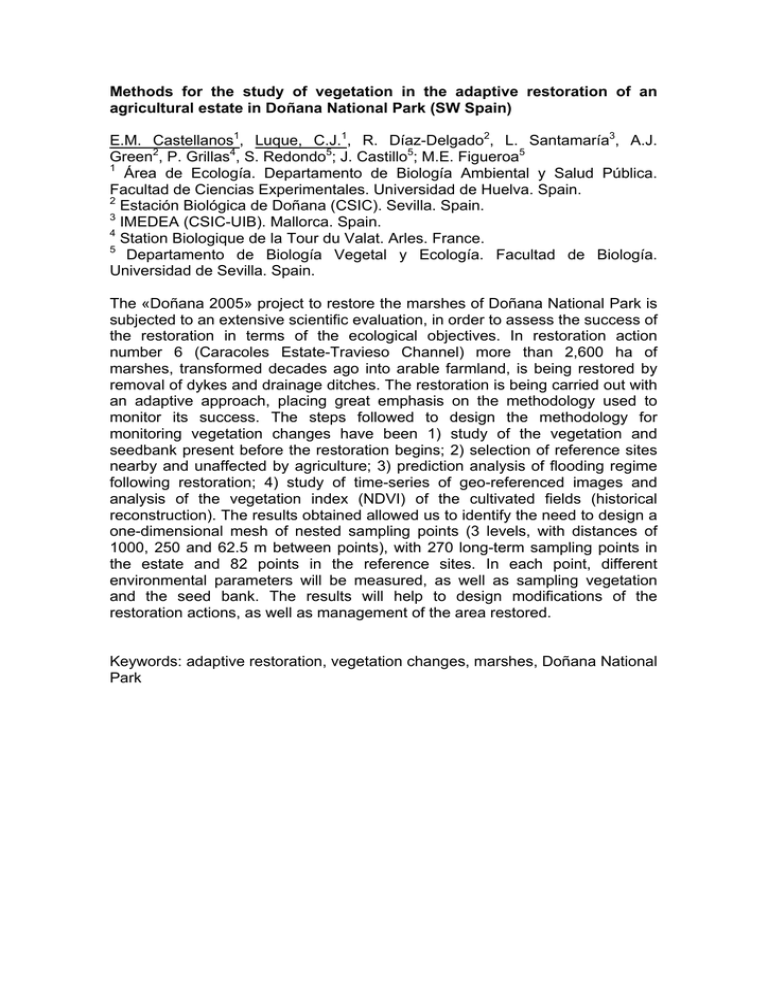
Methods for the study of vegetation in the adaptive restoration of an agricultural estate in Doñana National Park (SW Spain) E.M. Castellanos1, Luque, C.J.1, R. Díaz-Delgado2, L. Santamaría3, A.J. Green2, P. Grillas4, S. Redondo5; J. Castillo5; M.E. Figueroa5 1 Área de Ecología. Departamento de Biología Ambiental y Salud Pública. Facultad de Ciencias Experimentales. Universidad de Huelva. Spain. 2 Estación Biológica de Doñana (CSIC). Sevilla. Spain. 3 IMEDEA (CSIC-UIB). Mallorca. Spain. 4 Station Biologique de la Tour du Valat. Arles. France. 5 Departamento de Biología Vegetal y Ecología. Facultad de Biología. Universidad de Sevilla. Spain. The «Doñana 2005» project to restore the marshes of Doñana National Park is subjected to an extensive scientific evaluation, in order to assess the success of the restoration in terms of the ecological objectives. In restoration action number 6 (Caracoles Estate-Travieso Channel) more than 2,600 ha of marshes, transformed decades ago into arable farmland, is being restored by removal of dykes and drainage ditches. The restoration is being carried out with an adaptive approach, placing great emphasis on the methodology used to monitor its success. The steps followed to design the methodology for monitoring vegetation changes have been 1) study of the vegetation and seedbank present before the restoration begins; 2) selection of reference sites nearby and unaffected by agriculture; 3) prediction analysis of flooding regime following restoration; 4) study of time-series of geo-referenced images and analysis of the vegetation index (NDVI) of the cultivated fields (historical reconstruction). The results obtained allowed us to identify the need to design a one-dimensional mesh of nested sampling points (3 levels, with distances of 1000, 250 and 62.5 m between points), with 270 long-term sampling points in the estate and 82 points in the reference sites. In each point, different environmental parameters will be measured, as well as sampling vegetation and the seed bank. The results will help to design modifications of the restoration actions, as well as management of the area restored. Keywords: adaptive restoration, vegetation changes, marshes, Doñana National Park
